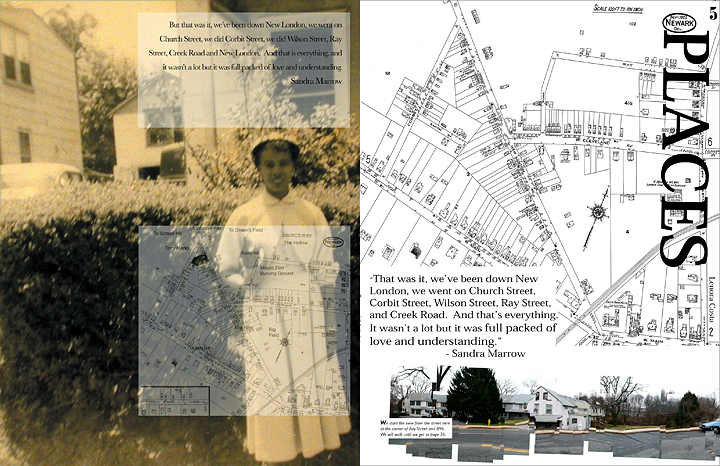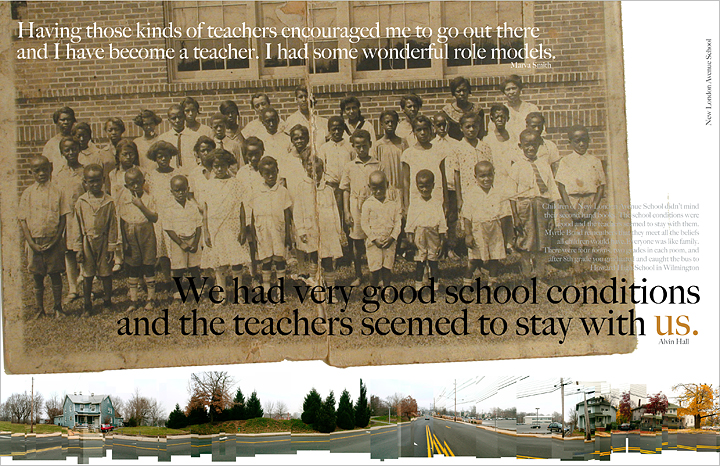In 2004, working with Bernie Herman, Director of the Center for American Material Culture Studies, RAY NICHOLS, and a dozen VISUAL COMMUNICATIONS STUDENTS produced a book entitled, "PEOPLE WERE CLOSE." The 108-page book tells the story of the African-American community in Newark bounded by New London Road from the train tracks north to Clayton Hall, including Rose, Ray, Corbit, and Mill streets. Along with the student design of the pages, a visual highlight of the book is a 2" x 80' (as in feet) photographic panorama of multiple-angle views of every building along the included streets in the neighborhood that runs along the bottom of the pages.
Here are a few of the 17” strips of photos. The African-American church at the corner of Cleveland and New London Road (896) is at the center of the top image.
Here is a close-up of one section of the plinth to show how piecing the images together worked.
Organizing, cropping, retouching, and positioning several thousand images was accomplished in the Visual Communications Macintosh Lab as part of the commitment of the entire VC family membership. It turned out to be an excellent experience in organizing digital files.
The book cover was printed via letterpress at Raven Press at the University of Delaware.
Alas, time moves on, and during the summer of 2019, the remaining houses along New London Road were demolished (see below). The houses were arguably run down, but it is a shame that there isn’t some way to preserve more of the history. It makes me feel good that the group of us did our part to honor this neighborhood and its impact on the history of Newark.
Slowly, real estate groups began buying up the edges of the community to build student rentals. One day, we drove by, and the main ones were gone, as you can see below.
People Were Close was a great effort and a wonderful student experience to help maintain a bit of Newark’s history.
Here are some sample pages of People Were Close.
The second of two books designed by VC students through the Center for American Material Culture Studies has been designed and printed. This full-color, 120-page book, “Food, Poems, and Stories,” combines recipes and history based on interviews with residents recorded through a project by Bernie Herman’s seniors.



















